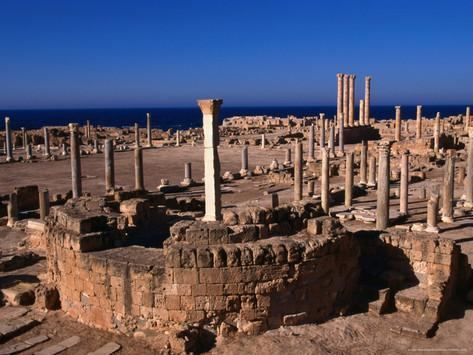Area 5,250 km² | ||
 | ||
Nuqat al Khams (Arabic: النقاط الخمس Nuqāṭ al Ḫams) is one of the districts of Libya. It is in the northwest of the country, in what had been the historical region of Tripolitania. Its capital is Jumayl. In the north, Nuqat al Khams has a shoreline on the Mediterranean Sea. To the west, it borders the Medenine Governorate of Tunisia. Domestically, it borders the following districts, namely, Zawiya in east, Jabal al Gharbi in southeast and Nalut in the southwest. Nuqat al Khams is a part of Triplotania geographical region of Libya.
Contents
Map of Nuqat al Khams District, Libya
Per the census of 2012, the total population in the region was 157,747 with 150,353 Libyans. The average size of the household in the country was 6.9, while the average household size of non-Libyans being 3.7. There were totally 22,713 households in the district, with 20,907 Libyan ones. The population density of the district was 1.86 persons per sq. km.
Geography
In the north, Nuqat al Khams has a shoreline on the Mediterranean Sea. To the west, it borders the Medenine Governorate of Tunisia. Domestically, it borders the following districts, namely, Zawiya in east, Jabal al Gharbi in southeast and Nalut in the southwest. Nuqat al Khams is a part of Triplotania geographical region of Libya that runs from north to south and has set of coastal oases, plains and limestone plateaus having an elevation of 2,000 ft (610 m) to 3,000 ft (910 m). The region receives an annual rainfall of 16 in (410 mm). There are no perennial rivers in the region, but the region is abundant with groundwater aquifers. Libya has mostly a flat undulating plain and occasional plateau, with an average elevation of around 423 m (1,388 ft). Around 91 per cent of the land is covered by desert, with only 8.8 per cent agricultural land (with only 1 % arable lands) and 0.1 per cent of forests. Along the coastal regions, the climate is Mediterranean, while it is desert climate in all other parts. Dust storms lasting four to eight days is pretty common during Spring. Triplotania is the northwest region, while it is Cyrenacia in the east and Fezzen in southwest.
Demographics
Per the census of 2012, the total population in the region was 157,747 with 150,353 Libyans. The average size of the household in the country was 6.9, while the average household size of non-Libyans being 3.7. There were totally 22,713 households in the district, with 20,907 Libyan ones. The population density of the district was 1.86 persons per sq. km. Per 2006 census, there were totally 111,646 economically active people in the district. There were 64,359 government employees, 3,680 employers, 32,901 first level workers and 697 second level workers. There were 22,669 workers in state administration, 6,201 in agriculture, animal husbandry and forestry, 6,053 in agriculture & hunting, 36,296 in education, 6,634 in private enterprises, 4,682 in health & social work, 6,463 in production, 36,215 in technical work and 1,216 service workers. The total enrollment in schools was 87,319 and the number of people above secondary stage and less than graduation was 4,254. As per the report from World Health Organization (WHO), there were no communicable disease centres, one dental clinics, four general clinics, eight in-patient clinics, 18 out-patient clinics, 64 pharmacies, 80 PHC centres, one polyclinics, no rural clinics or specialized clinics.
Administration
With the creation of the shabiyah system, Nuqat al Khams was reduced in size. Libya became independent in 1951 from the colonial empire and generally known for its oil rich resources. As a part of decentralization in 2012, the country is administratively split into 13 regions from the original 25 municipalities, which were further divided in 1,500 communes. As of 2016, there were 22 administrative divisions in the country in the form of districts.
